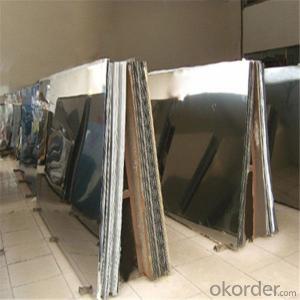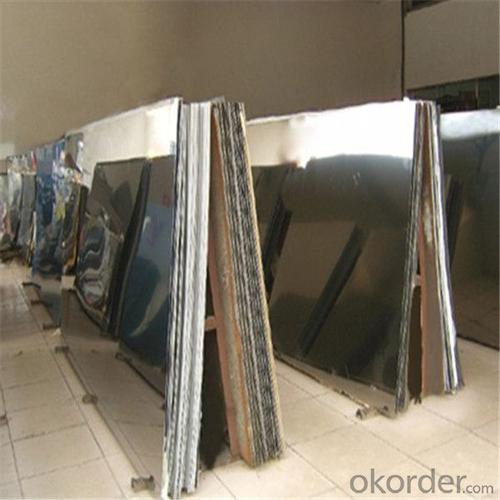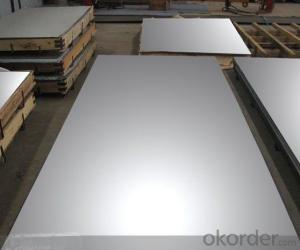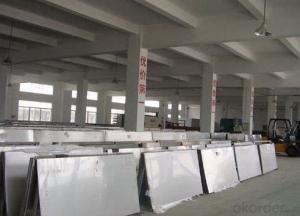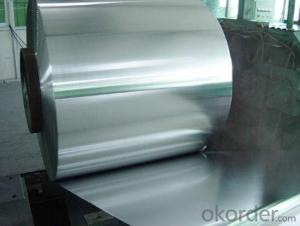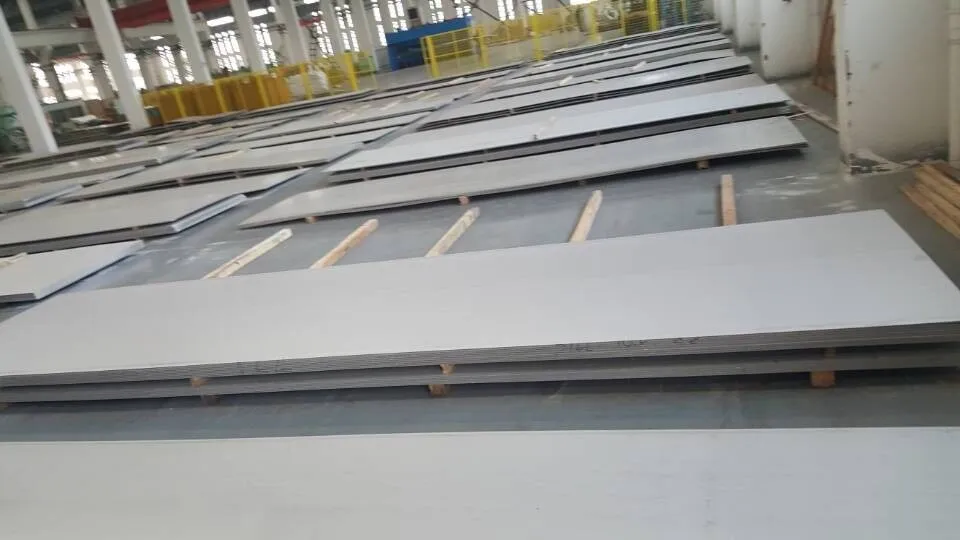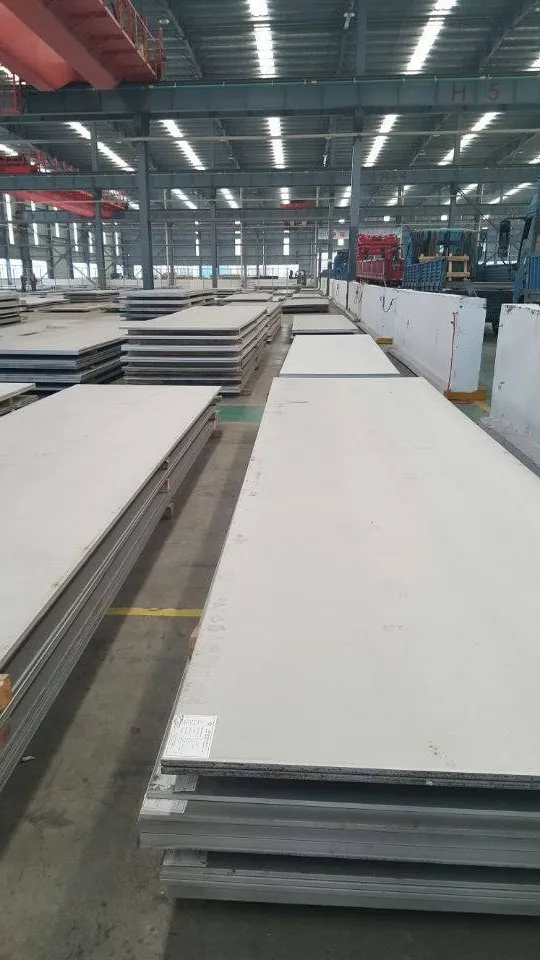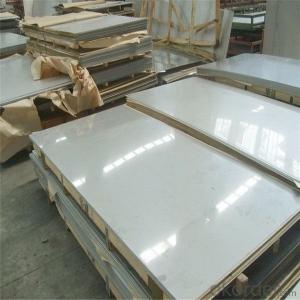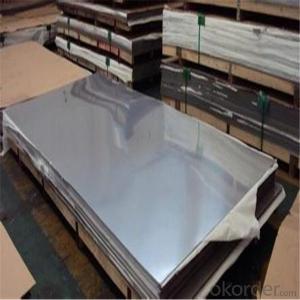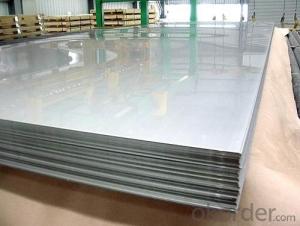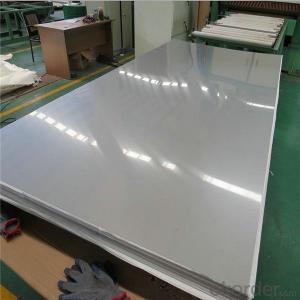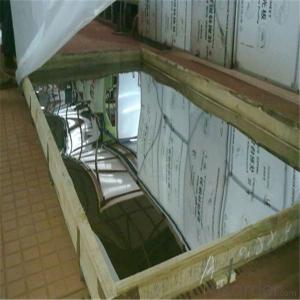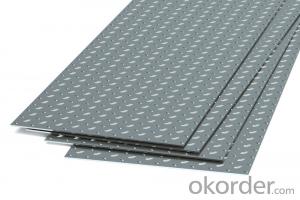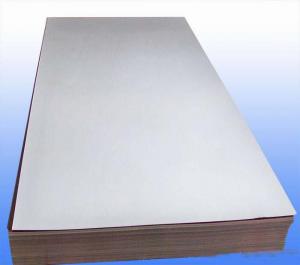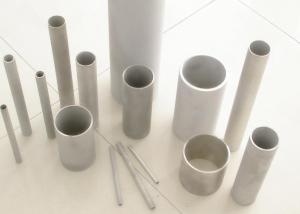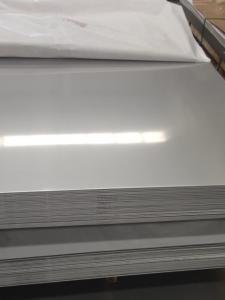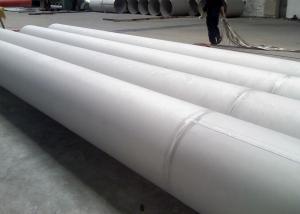Duplex 2205, 2507 Stainless Steel Sheet
- Loading Port:
- Shanghai
- Payment Terms:
- TT OR LC
- Min Order Qty:
- 3 m.t.
- Supply Capability:
- 20000 m.t./month
OKorder Service Pledge
OKorder Financial Service
You Might Also Like
Specification
duplex 2205, 2507 stainless steel sheet
We are a professional manufacturer of stainless steel sheet. According to ASTM, JIS and AISI,GB, standards, steel enhances effectiveness and of quality control from selecting the raw materials, cutting, slitting, shearing, surface treatment, packing, exporting of the existing products.
Product Description
Details of Stainless Steel Sheet/Plate: > > > > > > > > > > > > > > > > >
Commodity | duplex 2205, 2507 stainless steel sheet |
Grade | 201,202,304,304L,316,316L,310S,309S,321,301,310 |
Brand | TISCO ,BAOSTEEL,POSCO,JISCO,LISCO |
Certification | SGS, BV, IQI, TUV, ISO, etc |
Thickness | 0.2mm-40mm |
Width | 1000,1219,1250,1500mm, or as your requirements |
Length | 2000,2438,2500,3000,6000mm, or as your requirements |
Surface | No.1, 2B, BA, 8K Mirror, Hairline, Satin, Embossed, Brush, No.4, HL, Matt, PVC film, Laser film |
Standard | ASTM,AISI,SUS,JIS,EN,DIN,GB, ASME, etc |
Delivery time | 5-7 days after confirming the order |
MOQ | 1 Ton |
Advantages | Showing the splendor of your quality, wearresistant as well. Strong corrosion resistance and decorative effect, durable and beautiful in good taste. |
Surface--Application
Surface finish | Definition | Application |
2B | Those finished, after cold rolling, by heat treatment, pickling or other equivalent treatment and lastly by cold rolling to given appropriate luster. | Medical equipment, Food industry, Construction material, Kitchen utensils. |
BA/8K Mirror | Those processed with bright heat treatment after cold rolling. | Kitchen utensils, Electric equipment, Building construction. |
No.3 | Those finished by polishing with No.100 to No.120 abrasives specified in JIS R6001. | Kitchen utensils, Building construction. |
No.4 | Those finished by polishing with No.150 to No.180 abrasives specified in JIS R6001. | Kitchen utensils, Building construction, Medical equipment. |
Hairline | Those finished polishing so as to give continuous polishing streaks by using abrasive of suitable grain size. | Building Construction. |
No.1 | The surface finished by heat treatment and pickling or processes corresponding there to after hot rolling. | Chemical tank, pipe. |
Products Show
These are the normal items, for the special requirements,we can also meet.
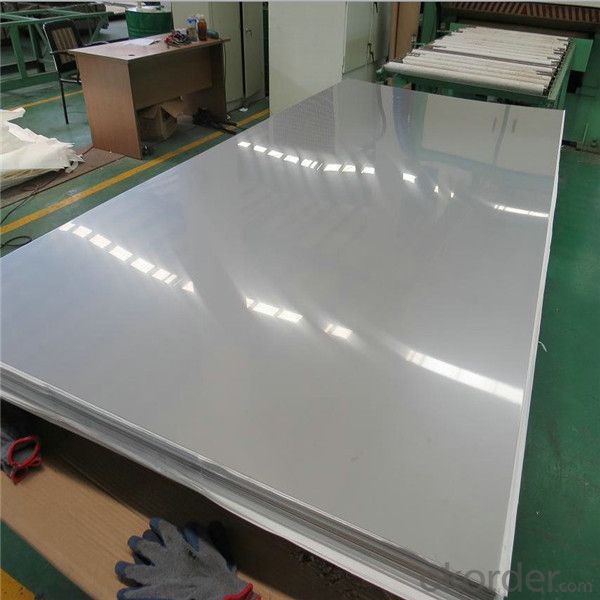
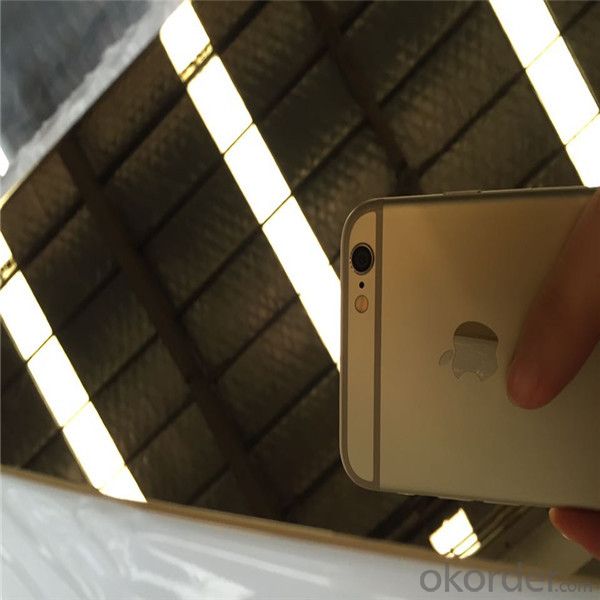
Our Advantages
• All products are made of high-quality imported raw materials.
• Our products are certified by ISO9001:2008 authentication quality systems.
• we are nominated as the AAA enterprise by Jiangsu government.
• Quick Response to Your Enquiry.
- Q: Can stainless steel sheets be cold rolled?
- Indeed, it is possible to cold roll stainless steel sheets. The cold rolling process involves passing a stainless steel sheet through a sequence of rollers at ambient temperature, leading to a decrease in thickness and an augmentation in both hardness and strength. By employing this technique, one can create stainless steel sheets with accurate measurements and impeccable surface textures. Cold rolling is widely utilized in the production of stainless steel sheets, catering to diverse sectors including automotive parts, kitchen devices, and architectural constructions.
- Q: How do you remove oil stains from stainless steel sheets?
- To remove oil stains from stainless steel sheets, you can start by wiping the surface with a clean, soft cloth dampened with warm water and mild dish soap. If the stain persists, apply a small amount of vinegar or rubbing alcohol onto the cloth and gently rub the affected area. Rinse with water and dry thoroughly to avoid water spots.
- Q: Are stainless steel sheets good for exhaust systems?
- Yes, stainless steel sheets are highly suitable for exhaust systems due to their exceptional heat resistance, durability, and corrosion resistance properties. Additionally, stainless steel sheets offer high strength and are able to withstand extreme temperatures and harsh environments, making them an ideal choice for exhaust systems that are exposed to heat, moisture, and chemicals.
- Q: Can stainless steel sheets be used for food preparation surfaces?
- Food preparation surfaces can indeed utilize stainless steel sheets. The reason behind stainless steel's popularity for such surfaces is its remarkable characteristics. Being non-porous, it avoids the absorption of any liquids or bacteria that can contaminate the food. Moreover, stainless steel exhibits resistance to corrosion, staining, and rusting, thereby ensuring its durability and longevity for food preparation surfaces. Furthermore, stainless steel can be easily cleaned due to its ability to withstand high temperatures and resistance to most cleaning agents. This fact makes it a hygienic option for food preparation surfaces, as it allows for thorough sanitization to prevent bacterial growth. In conclusion, stainless steel sheets provide a secure and practical alternative for food preparation surfaces.
- Q: How do I determine the hardness of stainless steel sheets?
- There are various techniques available for determining the hardness of stainless steel sheets. One commonly used method is the Rockwell hardness test, which involves measuring the depth of penetration of an indenter into the material. The Rockwell scale offers different scales for different materials, so it is essential to select the appropriate scale for stainless steel. To conduct the Rockwell hardness test, you will require a Rockwell hardness tester and either a diamond or tungsten carbide indenter. Begin by placing the stainless steel sheet on a stable, flat surface. Next, position the indenter on the surface of the sheet and apply a minor load. Once the minor load is applied, proceed to apply the major load until it reaches its maximum value. After the load has been applied and released, the hardness value will be displayed on the dial or digital display of the Rockwell hardness tester. This value corresponds to a specific hardness scale, such as HRC for stainless steel. It is important to remember that the Rockwell hardness test provides a relative measurement of hardness and may not accurately reflect the physical properties of the material. Moreover, the hardness of stainless steel can vary depending on factors such as alloy composition, heat treatment, and manufacturing process. Therefore, it is advisable to consult the material's specifications or conduct additional tests to obtain a more accurate and comprehensive understanding of the stainless steel sheet's hardness.
- Q: Are stainless steel sheets resistant to caustic soda?
- Yes, stainless steel sheets are generally resistant to caustic soda. Caustic soda, also known as sodium hydroxide, is a highly corrosive substance, but stainless steel is known for its excellent corrosion resistance. Stainless steel contains chromium, which forms a protective oxide layer on the surface of the metal, preventing it from reacting with caustic soda. However, it is important to note that the exact resistance of stainless steel to caustic soda may vary depending on the grade or type of stainless steel. Therefore, it is always recommended to consult the specific material specifications or consult with a qualified professional to ensure the appropriate choice of stainless steel for specific applications involving caustic soda.
- Q: What is the price range for stainless steel sheets?
- The price range for stainless steel sheets can vary depending on factors such as size, thickness, and grade of stainless steel. Generally, stainless steel sheets can range from $20 to $200 per sheet, but prices can be higher for specialized or custom-made sheets.
- Q: What are the different types of stainless steel sheet alloys?
- There are several different types of stainless steel sheet alloys, including austenitic, ferritic, martensitic, and duplex stainless steel. Each alloy has unique characteristics and is suitable for various applications based on factors such as corrosion resistance, strength, and heat resistance.
- Q: How can stainless steel sheets be cleaned and maintained?
- Stainless steel sheets boast exceptional durability and corrosion resistance, making them a favored option for various purposes. To uphold their appearance and functionality, it is crucial to engage in regular cleaning and proper maintenance. Outlined below are the necessary steps for cleaning and maintaining stainless steel sheets: 1. Begin by eliminating loose dirt or debris from the surface using a gentle cloth or brush. This precautionary measure prevents any potential scratching during the cleaning process. 2. Prepare a cleaning solution by combining warm water with a mild detergent or dish soap. Steer clear of abrasive cleaners or products containing chlorine, bleach, or ammonia, as they can harm the stainless steel surface. 3. Immerse a soft cloth or sponge into the cleaning solution and delicately scrub the stainless steel sheet in the direction of the grain. Refrain from applying excessive pressure to avoid scratching. 4. Thoroughly rinse the sheet with clean water to eliminate any residue from the cleaning solution. Ensure that all soap or detergent is completely washed away. 5. Employ a soft, lint-free cloth to dry the stainless steel sheet. It is important to dry it meticulously to prevent the formation of water spots or streaks. 6. For particularly stubborn stains or fingerprints, employ a stainless steel cleaner or specialized stainless steel wipes. Adhere to the instructions provided by the manufacturer for optimal results. These cleaners aid in restoring the luster and removing tough stains or marks. 7. To prevent scratches, avoid using abrasive materials like steel wool or rough brushes when cleaning stainless steel sheets. Instead, opt for soft cloths or non-abrasive sponges. 8. Routinely inspect the stainless steel sheets for any indications of corrosion or damage. If rust spots or pitting are detected, employ a stainless steel cleaner or passivation solution to restore the surface. Seek professional guidance if the damage is extensive. 9. To sustain the appearance of the stainless steel sheet, it is advisable to regularly wipe the surface with a soft cloth or microfiber towel to eliminate dust, fingerprints, or other blemishes. By adhering to these cleaning and maintenance measures, stainless steel sheets can retain their original shine, resist corrosion, and remain in excellent condition for an extended period of time.
- Q: How do you determine the best grade of stainless steel sheet for a specific application?
- Determining the best grade of stainless steel sheet for a specific application involves considering several factors. Firstly, it is important to assess the environmental conditions the sheet will be exposed to, such as temperature, humidity, and potential exposure to corrosive substances. This will help determine the required corrosion resistance of the stainless steel. Secondly, the mechanical properties required for the application should be considered. This includes factors like strength, hardness, and ductility. The intended use of the stainless steel sheet, whether it is for structural purposes or for a decorative application, will help determine the necessary mechanical properties. Additionally, the fabrication process and any subsequent treatments or finishes should be taken into account. Some grades of stainless steel may be more suitable for forming, welding, or machining, depending on their composition and characteristics. Furthermore, it is important to consider the cost implications of different stainless steel grades. Higher grades often come with a higher price tag, so it is crucial to balance the required performance with the available budget. To determine the best grade of stainless steel sheet, it is advisable to consult with experts in the field, such as stainless steel suppliers or engineers with expertise in materials selection. They can provide guidance based on their knowledge and experience, taking into consideration the specific requirements of the application.
Send your message to us
Duplex 2205, 2507 Stainless Steel Sheet
- Loading Port:
- Shanghai
- Payment Terms:
- TT OR LC
- Min Order Qty:
- 3 m.t.
- Supply Capability:
- 20000 m.t./month
OKorder Service Pledge
OKorder Financial Service
Similar products
Hot products
Hot Searches
Related keywords
